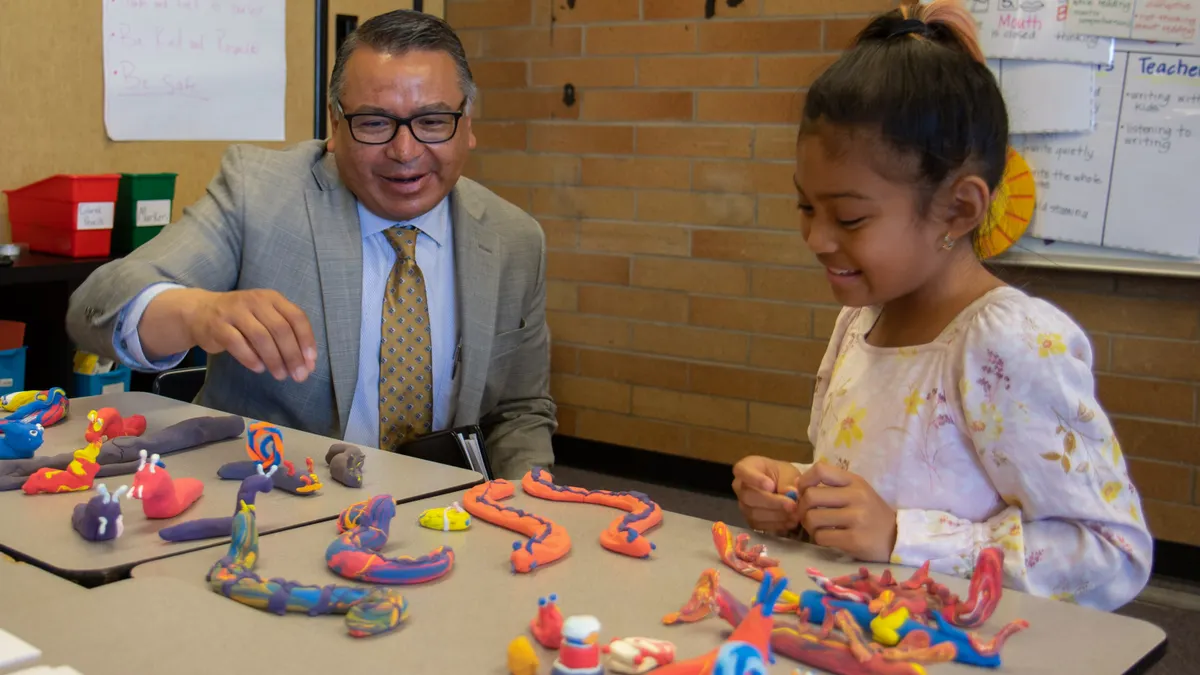Keeping students focused has always been a challenge, but in today’s distraction-ridden world, it’s even more difficult. Technology can be a source of distraction, but when harnessed effectively, it can engage students and enable educators to adopt a more personalized approach to education.
With the adoption of tech devices and innovative solutions on the rise, many schools are rejecting the traditional lecture class format in favor of more active learning initiatives. With that in mind, we rounded up five of the most popular approaches to boosting student engagement — and how they’re faring in the classroom.
1. Active learning
Active learning taps into students’ need to move, interact and play. “In a classroom that is using specific strategies to target engagement and active learning, you will not see students sitting quietly at their desks listening to a teacher speak about the content,” says Dr. Stacy Ness, academic coordinator for early childhood, special education, and professional licensure at Walden University. “Instead, you’ll see them participating and exploring, sitting on different types of seats, standing up, using interactive technology, playing games, engaging in discussion, or creating their own projects.”
Allowing students to take ownership of their education is at the heart of active learning. “Teachers have to be very creative in their planning and work with the students to find out what’s of interest to them,” says Ness, who stresses that expensive technology is not required for starting an active learning initiative. “The students become much more invested in their own learning because it’s tailored to their interests, strengths and needs—which really increases their intrinsic motivation.”
2. Flipped classroom model
In the flipped classroom model, students are expected to listen to podcasts, do readings, and/or watch videos at home in preparation for each class. The materials are usually delivered through an online platform, which the student can access via a home computer or a provided device at school. This allows teachers to use class time for discussion or interactive lessons instead of lectures.
“In theory, I think it’s a wonderful idea, especially for high school students,” says Ness. “If it works the way it’s intended and the students are really doing this work at home, they get very engaged in school and the teachers can check students’ understanding before they do assessments.”
But when students lack family support, technological resources or a home broadband connection, the flipped model loses effectiveness. “With any strategy in education, if the district doesn’t have a solid plan of support, the strategy will fade out and not work,” she says. “If everybody has a plan, I think it’s a very effective model.”
3. Student response systems
Clickers have been around for a while, but technology is creating new possibilities for student response systems. Several free apps, such as Socrative and Verso, allow students to respond to questions, take quizzes, and compete against each other—and since they’re apps, they can run on any connected device, such as a student’s smartphone or tablet. Since many schools are adopting 1:1 device initiatives, student response systems are becoming much more accessible, and they can promote engagement.
“The students’ responses can be immediately graphed and presented to the whole class,” says Ness. “Using a response system keeps students attending and engaged during classroom instruction.”
Increasingly, technology in the classroom will enable instant digital interactions between teachers and students. “That’s where technology in the classroom is headed,” says Shannon Johnson, a senior curriculum designer at JumpStart Games and former elementary classroom teacher. “Students are on their own devices, and teachers are able to instantly see their work and put it up on the electronic whiteboard or interactive panel.”
4. Gamification
Video games are as popular as ever, and curriculum developers are still trying to harness their momentum. “When I taught kindergarten, I saw a huge change in student engagement when I used games,” says Johnson. “I was working with small groups, and I was able to use the games more as a supplement to the teaching. I think games in general are useful for kids in the classroom, whether they’re on mobile devices or just traditional board games.”
Games do a good job of keeping students’ attention, but can they communicate new material or replace other teaching methods? “Done well, I think games are good supplements,” says Ness. “If you can teach students in that way, why not? With all the apps out there, a lot of kids are learning the basics from preschool on from games—and it works.”
5. Virtual and augmented reality
There’s a lot of buzz around virtual and augmented reality devices, but how widespread is their impact on K-12 classrooms? Cost is a limiting factor for now, but as this technology becomes more affordable — and more accessible—many believe it will play an important role in education.
“VR offers students the ability to explore something in 3-D right, such as looking at different parts of a heart, or visiting places in the world or times in history that you could only read about in the past,” Johnson says. “Once these technologies take off, I think they’re going to provide valuable hands-on experience for students.” However, training will be needed as schools adopt the devices. “Teachers really need to be supported in how to implement them in the classroom.”
While fresh ideas and new technology can help keep students interested, long-term engagement depends on the support a student receives at home. With the widespread adoption of learning management systems, it’s easier than ever for parents to stay connected. “They’re able to check in and stay aware of what their children are learning at school,” says Johnson. “Most students are more engaged and willing to learn when their parents are involved."
















